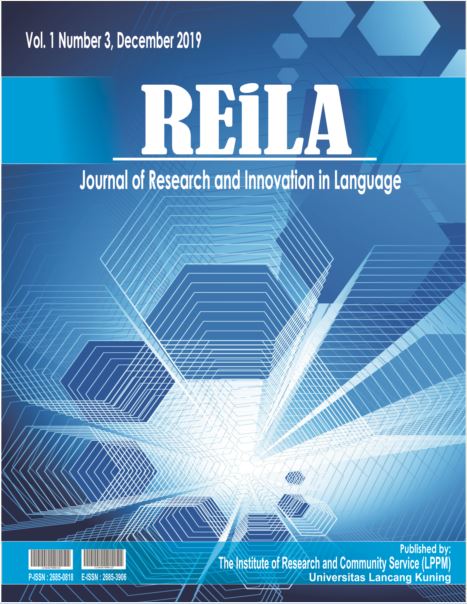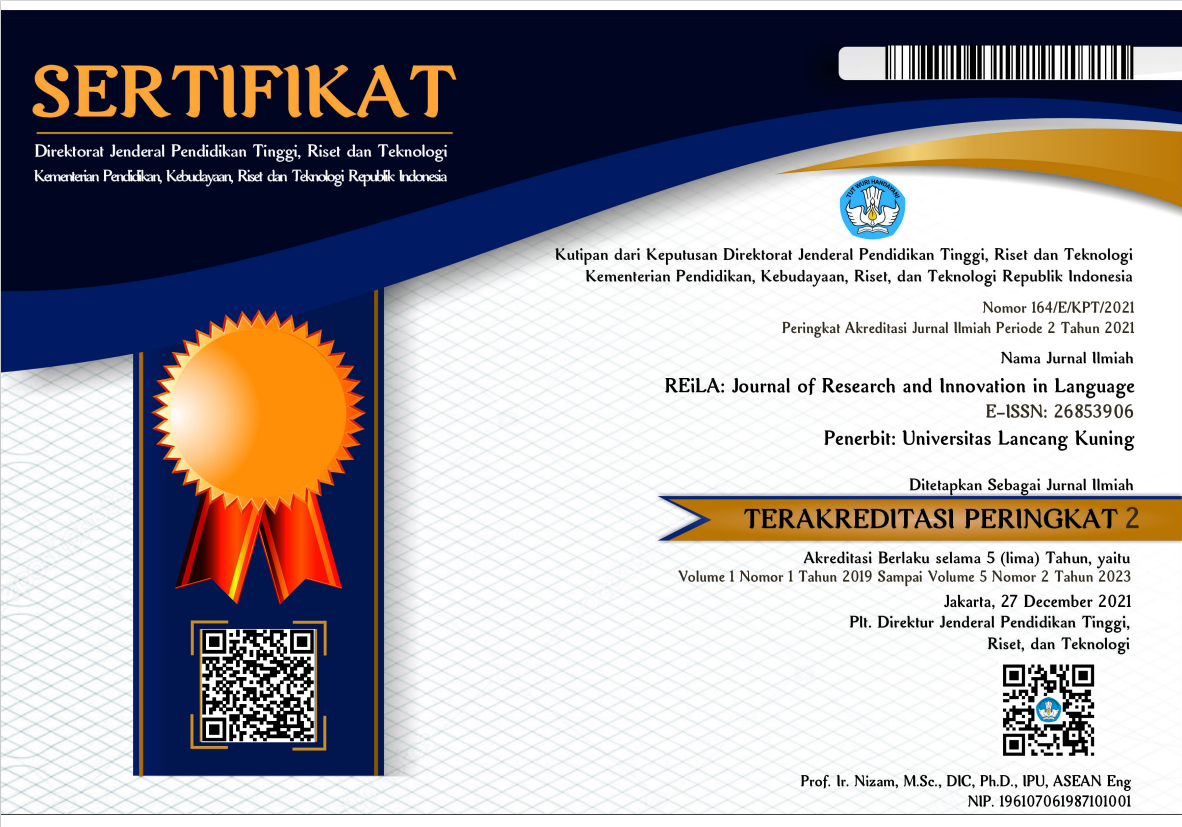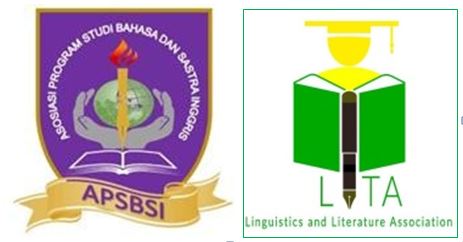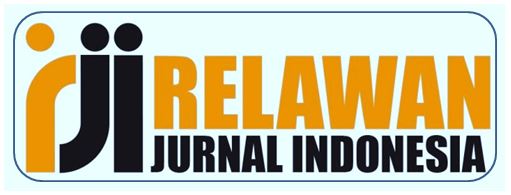Applying Possessive Pronoun in Writing Sentences: Exploring Students’ Ability and Problems in a Mixed Method Study
Abstract
The purpose of this research was to find out the students' ability in applying Possessive pronoun in writing sentences and the problems encounter it. This mixed method study employs an explanatory design to reveals it. 53 students out of 105 students from1st semester EFL students from one reputable University in Pekanbaru, Indonesia, were invited to this study. These 53 students were selected using simple random sampling and enrolled for an essay test and interview to see the students' ability and explaining the problems. The data analysis using SPSS showed that the average score of students was 52.98. Meanwhile for the median is 48, the mode is 20. The score of Standard Deviation is 27.93, Variance is 780.25, and Range is 84. Z-Score was found 41.5%, which is means higher than average and 58.5% while, students' ability was indicated below the average. It showed that the students were low ability in applying possessive pronoun in writing sentences. The study also found the common problems, i.e., (1) students still mixed up between possessive pronoun and possessive adjectives. (2) students used the wrong pattern in using a possessive pronoun. (3) students did not understand clearly about a possessive pronoun, (4) experiencing difficulties in learning possessive pronoun.
Downloads
References
Abbas, M. F. F., & Herdi, H. (2018). Investigating EFL Learners’ Ability in Generating, Organizing, and Elaborating Ideas in an Argumentative Essay. J-SHMIC: Journal of English for Academic, 5(2), 39-47.
Baskaran, Loga Mahesan. (2005). A Linguistic Primer for Malaysian. Kuala Lumpur: University of Malaya Press.
Brown, H. Douglas. (2007). Principles of Language Learning and Teaching. Fifth Edition. USA:Pearson Education, Inc.
Creswell, W. John. (2005). Educational Research Planning, Conducting, and Evaluating Quantitative and Qualitative Research. Second Edition. USA: University of Nebraska-Lincoln.
Danesi, Marcel. (2006). Basic American grammar and Usage. NY: Barron’s Educational Series, Inc.
Firdausi, Dinnie Hijrie. (2014). An Analysis of Students Error using Personal pronoun. UIN Syarif Hidayatullah. Jakarta
Handayani, R., Ihsan, D., & Mirizon, S. (2019). Interlanguage analysis of syntactic and diction errors found in theses written by magister students. International Journal of Indonesian Education and Teaching (IJIET), 3(1), 102-116.
Herlinawati, H. (2014). Feedback in English Writing for Indonesian EFL Students. ELT-Lectura, 1(1).
Hyland, K. (2018). Metadiscourse: Exploring interaction in writing. Bloomsbury Publishing.
Leech, Geoffrey and Svartvik, Jan. (2003). A Communicative grammar of English. Third Edition. England: Pearson ESL.
MacFayden, Heather. The Parts of Speech. uOttawa. Retrieved on December 20th (2015) from http://arts.uottawa.ca/writingcentre/en/hypergrammar/the-parts-of-speech
McArthur, T., Lam-McArthur, J., & Fontaine, L. (Eds.). (2018). Oxford companion to the English language. Oxford University Press.
Nurhasadah. (2014). An Analysis on Students Error in Using Personal pronoun. UIN Syarif Hidayatullah. Jakarta
Payne, Thomas Edward. (2011). Understand English grammar. USA: Cambridge University Press
Popal, M. (2018). The Effectiveness of Recasts in Improving the Understanding of English Possessive Pronouns.
Prambandarie, Inggih Ayu. (2008). An Analysis of Primary School Students Ability to use Personal pronoun. University of Sumatra Utara. Medan
Quirk et al. (1985). A Comprehensive grammar of the English Langauge. NY: Longman, Inc.
Rozakis, Laurre. (2003). English grammar for the Utterly Confused. USA: McGrow-Hill Companies.
Thornbury, Scott. (2000). How to Teach grammar. England: Pearson ESL.
Wijayanto, A. (2013). Error Analysis in the Use of Personal Pronouns Made by Eleventh Graders in Writing. RETAIN, 1(3).
Winarni, Arifah Febri. (2011). Improving Students’ Ability in using Personal pronoun through Contextual Teaching Learning. UIN Syarif Hidayatullah. Jakarta










